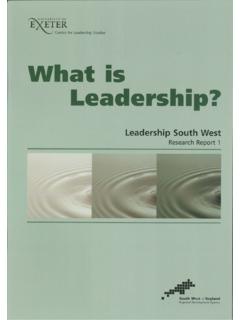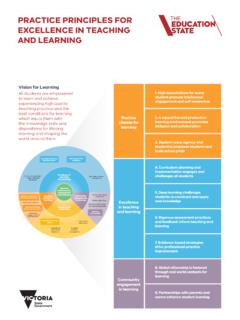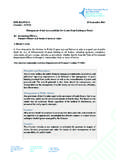Transcription of Primal Leadership: Unleashing the Power of Emotional ...
1 Primal leadership : Unleashing the Power of Emotional Intelligence by Goleman, Daniel; Boyatzis, Richard; McKee, Annie Primal leadership shows how Emotional Intelligence (EQ) is of greater importance in leadership than IQ. The authors believe that the fundamental task of to prime good feeling in those they lead. That occurs when a leader creates resonance a reservoir of positivity that frees the best in people. At its root, then, the Primal job of leadership is Emotional . Primal leadership gives us the path to great leadership . It teaches us what really moves people. Great leaders ignite our passion and inspire the best in us. When we try to explain why they are so effective, we speak of strategy, vision, or powerful ideas. But the reality is much more Primal : Great leadership works through the emotions.
2 By providing a framework for understanding the different EQ domains and leadership styles, we can learn who we need to to become and how we can lead to create resonance rather than dissonance. Throughout history and in cultures everywhere, the leader in any human group has been the one to whom others look for assurance and clarity when facing uncertainty or threat, or when there s a job to be done. The leader acts as the group s Emotional guide. Leading in this way empowers those we lead. Just how important is Emotional Intelligence in leadership ? If climate drives business results, what drives climate? Roughly 50 to 70 percent of how employees perceive their organization s climate can be traced to the actions of one person: the leader. More than anyone else, the boss creates the conditions that directly determine people s ability to work short, leaders Emotional states and actions do affect how the people they lead will feel and therefore perform.
3 How well leaders manage their moods and affect everyone else s moods, then, becomes not just a private matter, but a factor in how well a business will do. People watch the leader. If the leader is skilled at demonstrating their emotions, the better the emotions can spread to others. Leaders who are able to do this are an are Emotional magnets; people naturally gravitate to them. If you think about the leaders with whom people most want to work in an organization, they probably have this ability to exude upbeat feelings. It s one reason emotionally intelligent leaders attract talented people for the pleasure of working in their presence. For leaders to become a better Emotional guide Primal leadership gives some tools to improve our ability to create resonance in those we lead.
4 These tools are: Understanding the Emotional Intelligence Domains, the leadership Styles, and Self Directed Learning. Emotional Intelligence Domains: The first two are personal competencies and affect how we deal with ourselves, the second two are social competencies and affect how we deal with others. SELF-AWARENESS Emotional self-awareness: Reading one s own emotions and recognizing their impact; using gut sense to guide decisions Accurate self-assessment: Knowing one s strengths and limits Self-confidence: A sound sense of one s self-worth and capabilities SELF-MANAGEMENT Emotional self-control: Keeping disruptive emotions and impulses under control Transparency: Displaying honesty and integrity; trustworthiness Adaptability: Flexibility in adapting to changing situations or overcoming obstacles Achievement: The drive to improve performance to meet inner standards of excellence Initiative: Readiness to act and seize opportunities Optimism: Seeing the upside in events SOCIAL AWARENESS Empathy: Sensing others emotions, understanding their perspective, and taking active interest in their concerns (NOTE: This is not trying to make everyone happy, but taking feelings into account in our response.)
5 Organizational awareness: Reading the currents, decision networks, and politics at the organizational level Service: Recognizing and meeting follower, client, or customer needs RELATIONSHIP MANAGEMENT Inspirational leadership : Guiding and motivating with a compelling vision Influence: Wielding a range of tactics for persuasion Developing others: Bolstering others abilities through feedback and guidance Change catalyst: Initiating, managing, and leading in a new direction Conflict management: Resolving disagreements Teamwork and collaboration: Cooperation and team building leadership Styles: VISIONARY HOW IT BUILDS RESONANCE: Moves people toward shared dreams IMPACT ON CLIMATE: Most strongly positive WHEN APPROPRIATE: When changes require a new vision, or when a clear direction is needed COACHING HOW IT BUILDS RESONANCE: Connects what a person wants with the organization s goals IMPACT ON CLIMATE: Highly positive WHEN APPROPRIATE: To help an employee improve performance by building long-term capabilities AFFILIATIVE HOW IT BUILDS RESONANCE: Creates harmony by connecting people to each other IMPACT ON CLIMATE: Positive WHEN APPROPRIATE: To heal rifts in a team, motivate during stressful times, or strengthen connections DEMOCRATIC HOW IT BUILDS RESONANCE: Values people s input and gets commitment through participation IMPACT ON CLIMATE: Positive WHEN APPROPRIATE.
6 To build buy-in or consensus, or to get valuable input from employees PACESETTING HOW IT BUILDS RESONANCE: Meets challenging and exciting goals IMPACT ON CLIMATE: Because too frequently poorly executed, often highly negative WHEN APPROPRIATE: To get high-quality results from a motivated and competent team COMMANDING HOW IT BUILDS RESONANCE: Soothes fears by giving clear direction in an emergency IMPACT ON CLIMATE: Because so often misused, highly negative WHEN APPROPRIATE: In a crisis, to kick-start a turnaround, or with problem employees Self-Directed Learning People who successfully change in sustainable ways cycle through the following stages: The first discovery: My ideal self Who do I want to be? The second discovery: My real self Who am I? What are my strengths and gaps?
7 The third discovery: My learning agenda How can I build on my strengths while reducing my gaps? The fourth discovery: Experimenting with and practicing new behaviors, thoughts, and feelings to the point of mastery. The fifth discovery: Developing supportive and trusting relationships that make change possible. Take Aways: Rollouts. How we as leaders rollout change is just as important as the quality/excellence of the tool. This is because people s emotions have a greater effect on the success of a rollout than people's intellect. Slow down to speed up. Sometimes bringing people into the conversation feels like it is slowing things down, but it is necessary to get buy-in. When we slow things down at the beginning it allows everyone to get on board. If we go too fast with launching things we often realize a year later that even though the ship has sailed, there are very few people on board.
8 Trickle-Down, not Top-Down. If we have the time to roll this out slowly and let buy-in build we will have a tool that can be useful for years to come. If those we lead keep getting top down directives (or it feels that way), there is no buy-in. If it feels like just another requirement that they have to do and it is something that people begrudgingly do (or avoid doing). People need to feel heard. They need to not feel this is just another top down thing. To get buy-in, people love to interact with ideas before it is set in stone. This will make them feel heard and valued. It will also allow us to gain valuable insights into potential misunderstandings before an official rollout. Finally, by drawing them into the process before completion they will feel an ownership of it because they touched it before it was finalized.
9 (This remains true even if the tool is complete.) Without buy-in, you are trying to lead people where they don t want to go. Taking time to get buy-in is like taking time to show people a travel brochure and letting people get excited about the journey. If the goal is buy-in, the extra time it takes is worth the years of positive movement. When it comes to change, efficient is not always effective. Response: God leads and guides us not merely by command, but in faithfully dealing with our entire person, emotions and all. He sets the direction, but He also understands that we are frail and that we struggle. If I am to shepherd and lead the people in my care as God shepherds me, then I too must faithfully take into account the whole person that I am leading. They are not machines, they are people who needs not just direction, but Emotional guidance as well.
10 More than anyone else, the leader acts as the group s Emotional guide. The following areas are those that I desire to grow in. Self-Awareness- I often take time to be still and pray through my own emotions with the Lord, but in the past I have been very poor at being able to articulate what those emotions are. I need to be more reflective on this so that I know what my own emotions are. Doing this will help me to be more honest with myself and also be able to articulate it better to others. Without recognizing our own emotions, we will be poor at managing them, and less able to understand them in others. Self-aware leaders are attuned to their inner signals. They recognize, for instance, how their feelings affect themselves and their job performance. Self-Management- I need to be more authentic and honest with others about my feelings.







